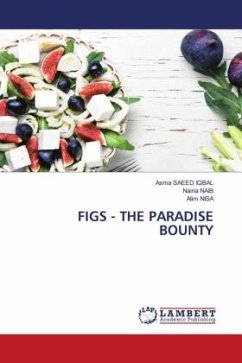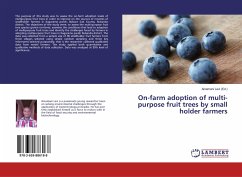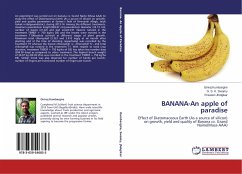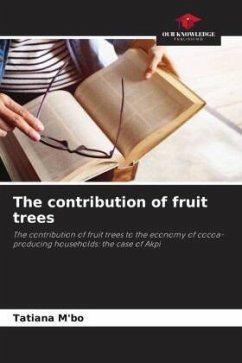
FIGS - THE PARADISE BOUNTY
Versandkostenfrei!
Versandfertig in 6-10 Tagen
29,99 €
inkl. MwSt.

PAYBACK Punkte
15 °P sammeln!
The Fig was one of the earliest fruit trees to be cultivated, and its cultivation spread in remote ages over all the districts around the Aegean Sea and throughout the Levant. In Latin myth the fig was held sacred to Bacchus and employed in religious ceremonies; the fig tree that overshadowed the twin founders of Rome in the wolf's cave was an emblem of the future prosperity of the race.The fig tree appears repeatedly in both the Old and New Testaments of the Bible. Figs hold a position of symbolism in many world religions, including Christianity, Islam, Hinduism, Judaism, and Buddhism, repres...
The Fig was one of the earliest fruit trees to be cultivated, and its cultivation spread in remote ages over all the districts around the Aegean Sea and throughout the Levant. In Latin myth the fig was held sacred to Bacchus and employed in religious ceremonies; the fig tree that overshadowed the twin founders of Rome in the wolf's cave was an emblem of the future prosperity of the race.The fig tree appears repeatedly in both the Old and New Testaments of the Bible. Figs hold a position of symbolism in many world religions, including Christianity, Islam, Hinduism, Judaism, and Buddhism, representing fertility, peace, and prosperity. The prophet Mohammed reportedly identified the fig as the one fruit he would most wish to see in paradise.












